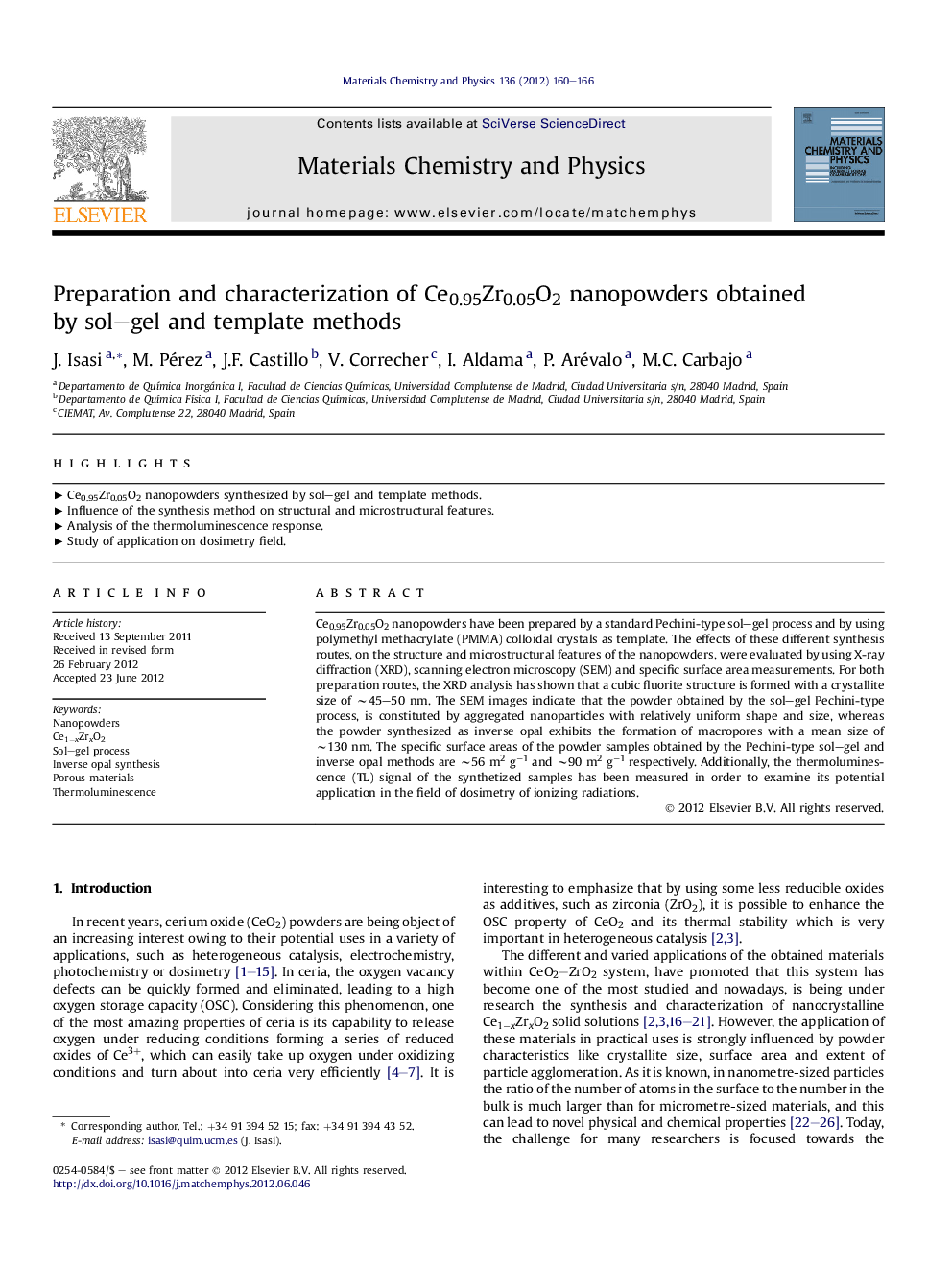| Article ID | Journal | Published Year | Pages | File Type |
|---|---|---|---|---|
| 1523788 | Materials Chemistry and Physics | 2012 | 7 Pages |
Ce0.95Zr0.05O2 nanopowders have been prepared by a standard Pechini-type sol–gel process and by using polymethyl methacrylate (PMMA) colloidal crystals as template. The effects of these different synthesis routes, on the structure and microstructural features of the nanopowders, were evaluated by using X-ray diffraction (XRD), scanning electron microscopy (SEM) and specific surface area measurements. For both preparation routes, the XRD analysis has shown that a cubic fluorite structure is formed with a crystallite size of ∼45–50 nm. The SEM images indicate that the powder obtained by the sol–gel Pechini-type process, is constituted by aggregated nanoparticles with relatively uniform shape and size, whereas the powder synthesized as inverse opal exhibits the formation of macropores with a mean size of ∼130 nm. The specific surface areas of the powder samples obtained by the Pechini-type sol–gel and inverse opal methods are ∼56 m2 g−1 and ∼90 m2 g−1 respectively. Additionally, the thermoluminescence (TL) signal of the synthetized samples has been measured in order to examine its potential application in the field of dosimetry of ionizing radiations.
► Ce0.95Zr0.05O2 nanopowders synthesized by sol–gel and template methods. ► Influence of the synthesis method on structural and microstructural features. ► Analysis of the thermoluminescence response. ► Study of application on dosimetry field.
